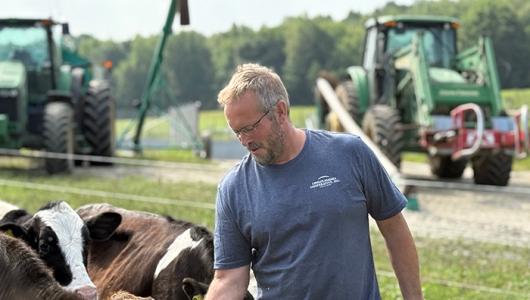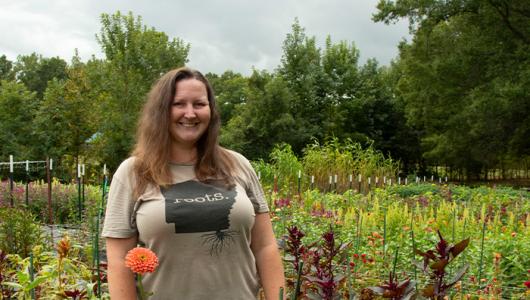This Friday meet Dan and Ruth Boerst, dairy farmers in Manawa, Wisconsin. The Boersts accomplished their dream of becoming dairy farmers when they purchased their farm in 1982. From the beginning, the couple kept their conservation and soil health goals at the forefront. Starting out with only with 100 acres, the Boersts now farm 470 acres and milk 100 dairy cows. As the farm grew, so did their conservation efforts.
“We’ve always been involved in implementing conservation,” said Dan. “In the last 15 years, we’ve hosted at least one field day each year, if not more. We’re doing our best to share soil health practices that work with other farmers.”
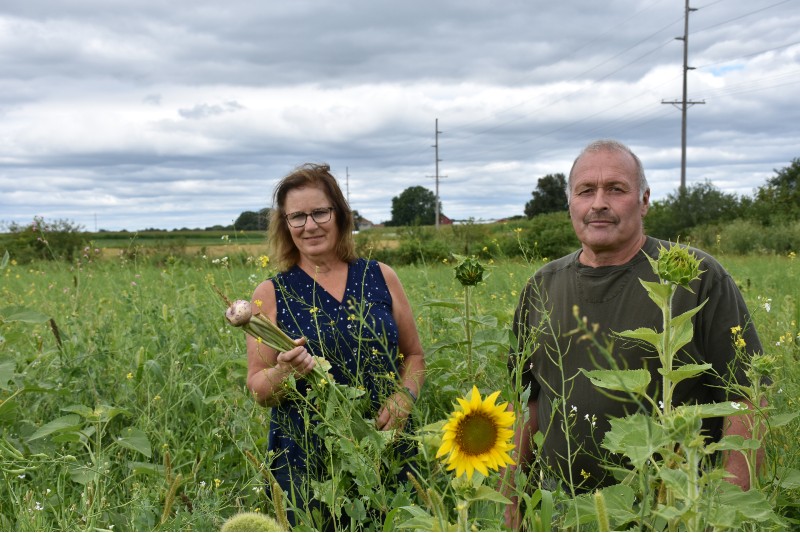
Growing Conservation Efforts
The Boersts partnered with USDA’s Natural Resources Conservation Service to install grassed waterways on their property through the Environmental Quality Incentives Program. As the couple acquired more land, they installed four water and sediment control basins, subsurface drains, and underground outlets. The basins are a great solution to deal with excess water on the farm.
“The basins help Dan farm on sloping lands, while also improving water quality by trapping sediment on uplands and preventing it from reaching the Little Wolf River,” said Derrick Raspor, NRCS soil conservationist. “The basins also reduce gully erosion by controlling water flow within the drainage area.”

“The Little Wolf River is really close to us. We knew we could have a positive impact by adding conservation to the landscape,” said Ruth. “When we bought the land, it was so wet that we could never plant before July. That’s one of the many reasons why we got involved with implementing soil health and conservation practices.”
Additionally, the couple signed on as a demonstration farm, sharing conservation practices, technologies and techniques as part of the Upper-Fox-Wolf Demonstration Farms Network. Funded through the NRCS Great Lakes Restoration Initiative, this partnership effort between NRCS and Waupaca County Land and Water Conservation established a network of ten farms across eight counties in northeast Wisconsin to demonstrate the best conservation practices to reduce phosphorus entering into the Great Lakes basin.
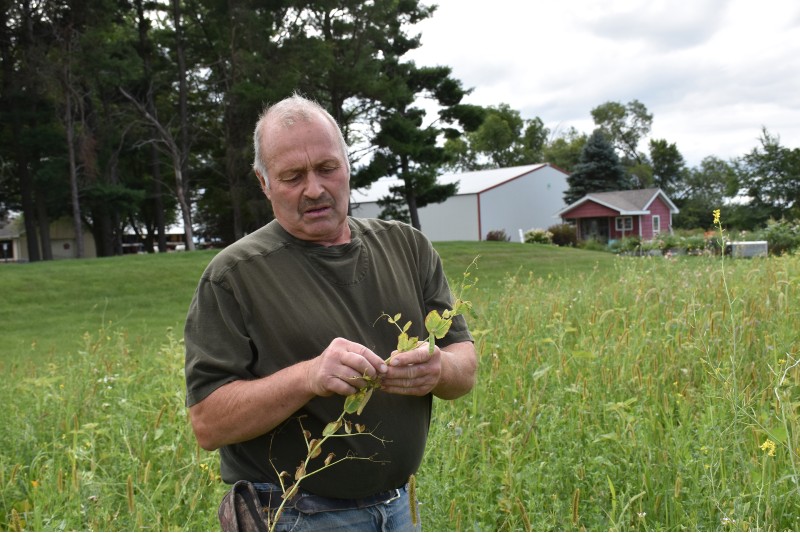
Growing for the Community
Dan and Ruth set aside two acres of their farm for a green cover milpa garden to grow produce to help feed those in need. The milpa technique originated in Central America where Mayans used a mixture of corn, squash and beans to improve soil and grow food.
“The garden is a great way for Dan and Ruth to utilize their two-acre field next to their home,” said Derrick. “Not only does the mix contain various legumes, brassicas, greens, and vine crops, it also builds habitat for beneficial insects, pollinators, and wildlife.”
The garden is helping feed their community, while also building their soil nutrients, improving the microbial diversity of their soil and providing good winter cover as a cover crop, increasing their overall soil health.
“When we saw the milpa garden opportunity, I first connected with Manawa Food Pantry. Now that the garden is thriving,” said Ruth. “I’ve also talked with two local daycares that are willing to take produce whenever we have it.”
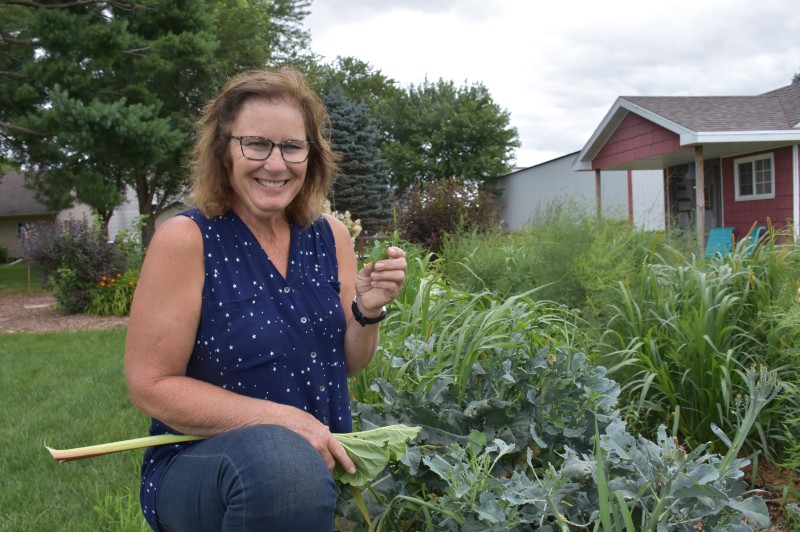
Milpa gardens are known as chaos gardens because they are a mix of everything. The Boerst’s garden consists of over 50 different species of seeds, including leaf vegetables, squash, cucumbers, pumpkins, melons, beets, beans, and brassicas.
The garden has had a positive effect on local Manawa residents. One of the acres of seed was provided free-of-charge with the agreement to donate produce to the local food pantry.
“With Dan and Ruth’s success, and nine other farms in the network, this is something we plan to look into for other farms, as a way to expand community involvement and help feed residents,” Derrick said.
The Boersts have seen many positive impacts since implementing soil health practices on their land. Their positive proof is in their soil.
More Information
Each Friday visit local farms, ranches, forests, and resource areas through our Fridays on the Farm stories. Meet farmers, producers and landowners who are working to improve their operations with USDA programs.
USDA offers a variety of risk management, disaster assistance, loan, and conservation programs to help producers weather ups and downs in the market and recover from natural disasters as well as invest in improvements to their operations. Learn about additional programs.
For more information about USDA programs and services, contact your local USDA service center.
Tivoli Gough is the public affairs specialist for NRCS in Wisconsin.

